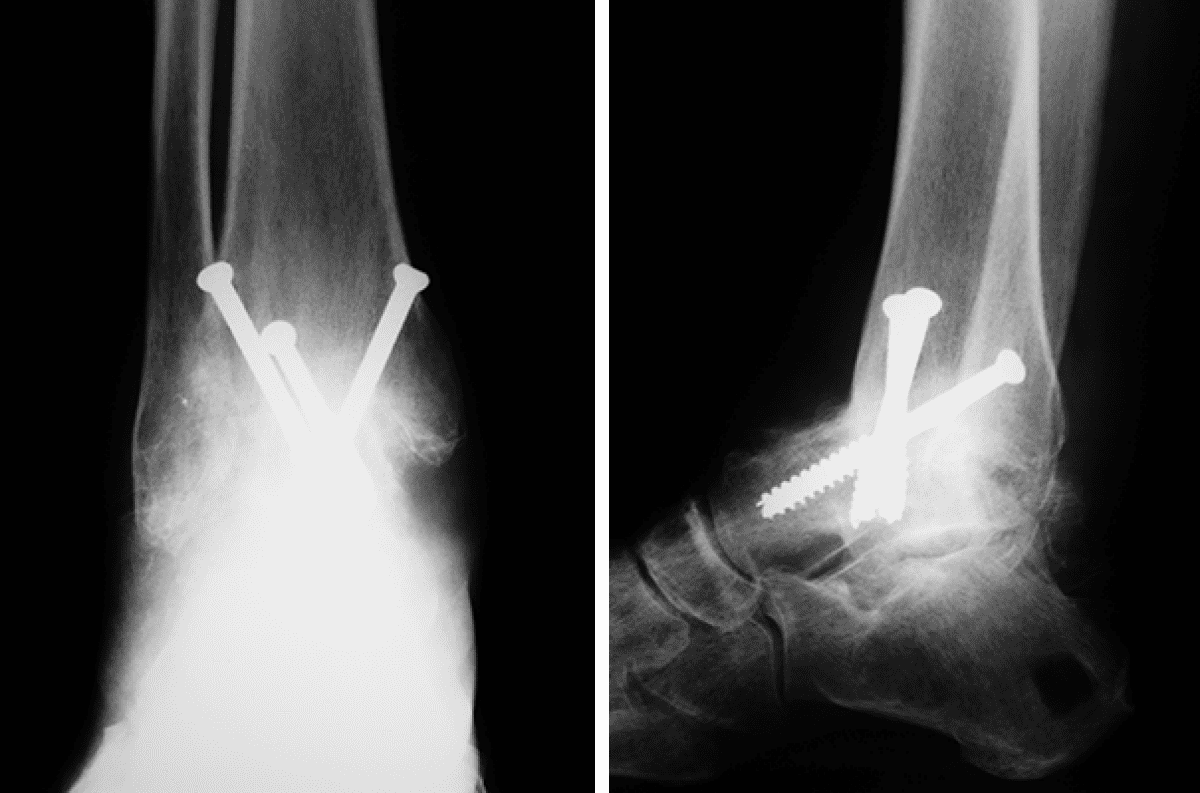What You Need To Know About Ankle Fusion Surgery
- - Category: Diseases & Conditions
- - 22 Jun, 2022
- - Views: 726
- Save

Ankle Fusion Surgery
Ankle fusion, also known as ankle arthrosis, is a surgical treatment used to treat severe degenerative ankle arthritis that causes unbearable, motion-limiting ankle discomfort. The inflammatory cartilage is removed, and two or more ankle bones are surgically joined together.
Ankle fusion surgery removes the swelling and degenerating cartilage that causes pain in the ankle joint. The ankle bones are positioned so that they can fuse together to produce an immovable unit that is not dependent on cartilage for stability once the inflammatory tissues are removed.
Ankle fusion surgery can be done via ankle arthroscopy, which involves a small incision and the use of a camera for viewing, or via open surgery. The procedure is performed under local or spinal anaesthetic.
Contraindications
Ankle fusion surgery is a viable choice for people of all ages, although it does come with some risks. If you have a joint infection or are a smoker, you are at a higher risk of problems following surgery.
If you have a blood clotting issue, you may not be able to have this operation since you are at risk of bleeding or blood clots. You may not be a candidate for ankle fusion surgery if you are at risk of poor healing due to a lack of blood flow.
Potential Risks
There are various hazards associated with ankle fusion surgery that you should be aware of. An infection of the skin or bone, bleeding or a hematoma, blood clots, damage to surrounding structures in the ankle, and ankle inflammation are all short-term dangers.
Problems with bone healing are one of the long-term hazards of ankle fusion surgery, which can lead to foot instability or altered ankle bone structure, interfering with your ability to walk painlessly following recovery.
Purpose of Ankle Fusion Surgery
Ankle fusion surgery aims to alleviate ankle pain. Arthritis is a chronic inflammatory condition of the joints that can cause severe pain and swelling due to inflammation and cartilage degradation.
Ankle fusion surgery may be able to reduce pain to the point that you can stop taking pain medicines and increase your physical activity.
How to Prepare
Because ankle arthritis is uncommon compared to hip and knee arthritis, your healthcare professional will want to clarify the source of your symptoms. Ankle joint damage, such as an ankle fracture, is often the precursor of excruciatingly painful ankle arthritis.
This work-up will include diagnostic testing such as an ankle X-ray or magnetic resonance imaging (MRI).
Location
Your treatment will take place in a surgical suite or operating room. Following your surgery, you will be required to stay in the hospital for a day or two.
What to Wear
Wear comfy clothing that you can change out of quickly. Because you'll be wearing a cast on your injured ankle following surgery, having a comfortable shoe to wear on the other foot is a good idea.
Food, Drink, and Medications
The night before your test, you should not eat or drink after midnight. Before your operation, your healthcare professional may advise you to change your prescriptions for a few days. You may need to stop using some blood thinners or anti-inflammatories, for example. However, don't make any changes to your meds without first consulting your doctor.
What to Bring
Bring your health insurance information as well as a form of identification with you. Bring no valuables with you, and don't wear any jewelry.
Bring a change of clothes that you can easily slip on over your cast when you're ready to leave the hospital following surgery, such as a skirt, wide-legged slacks, or shorts.
Recovery
You'll need to see your doctor for follow-up sessions so they can assess your progress. Your doctor will examine your ankle to see if it is healing properly and if there are any signs of complications.
You should also describe any discomfort you're experiencing and inform your doctor how much pain medication you've been taking. This will allow them to analyze your healing, see if you're in more pain than you thought, and change your medication if necessary.
During one of your follow-up appointments, your healthcare provider will most likely remove all of your surgical hardware, but one or more parts may be left in place for joint stability.



